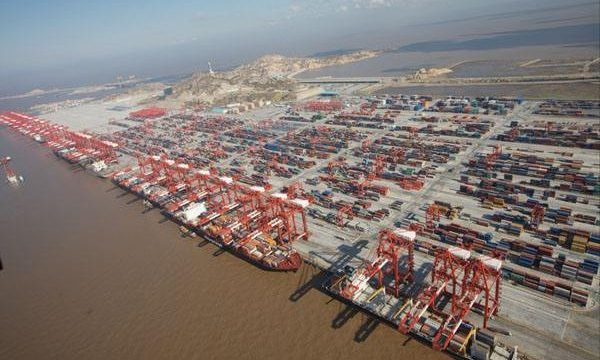Shanghai develops in-town check-in concept for its busy container port

Shanghai port is launching on July 1 a de-facto in-town check-in service for containers bound for its offshore Yangshan deepwater terminals.
Shanghai International Port Group (SIPG) has signed with members of THE Alliance to use a new off-port container depot located on the mainland 32.5 km away from Yangshan. Containers can be dropped at the yard rather than taking them along the often congested East Sea bridge to the port. SIPG will then handle the boxes, ensuring they get to their vessel in time.
The new facility based at the Luchao railway container centre, which SIPG is classing as an inland container depot (ICD), will be free for ONE members for the first few months and will help alleviate yard space concerns at Yangshan. An even larger off-port yard facility will be constructed in Shanghai soon.
Commenting on the port news, Simon Young, a 33-year veteran at Cosco, compared the new infrastructure at Shanghai, the world’s busiest container port, to Hong Kong’s in-town check-in for luggage and passengers heading to the city’s airport, located some 23 km from the downtown area of the former British colony.

This model could be used elsewhere to relieve port/quay congestion. It seems to have taken a surprising amount of time for this model to find application. Something similar similar in HK could be very helpful. As well as reducing emissions and congestion it would break the excessive dependency on liquid hydrocarbon fuels. Potentially this sort of model would add capacity to the terminals without recourse to major infrastructure building and quay lengthening.